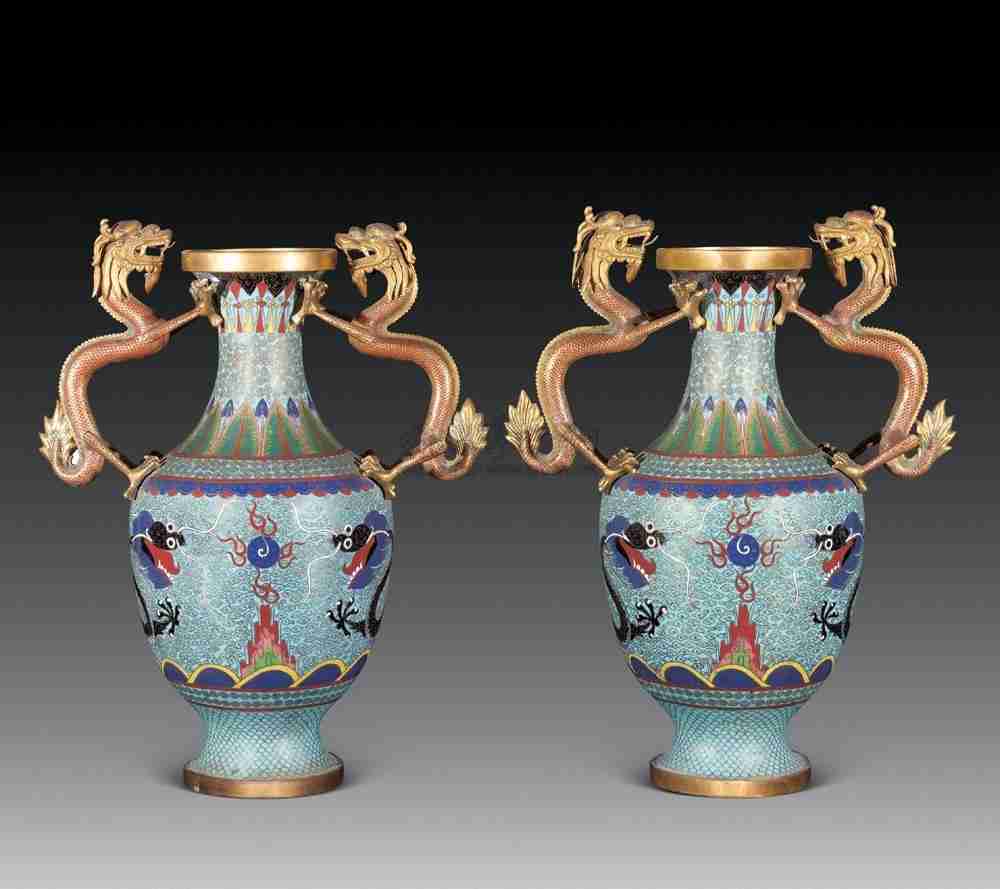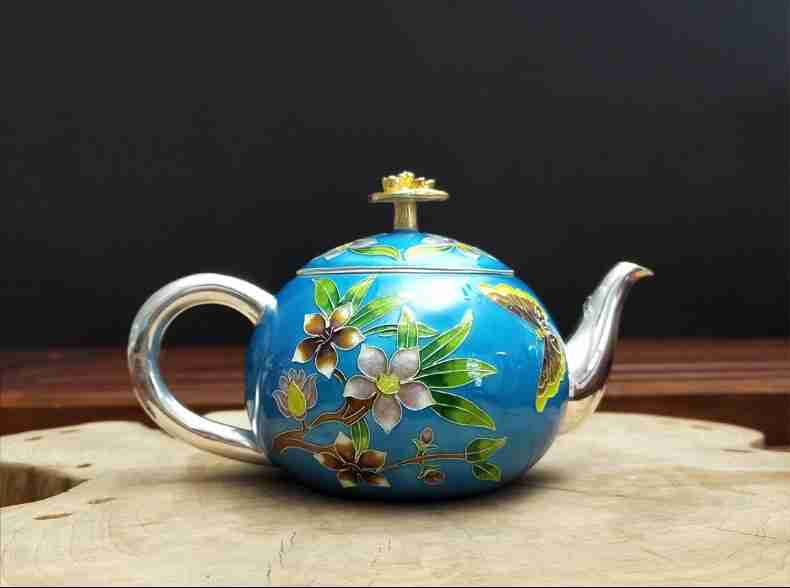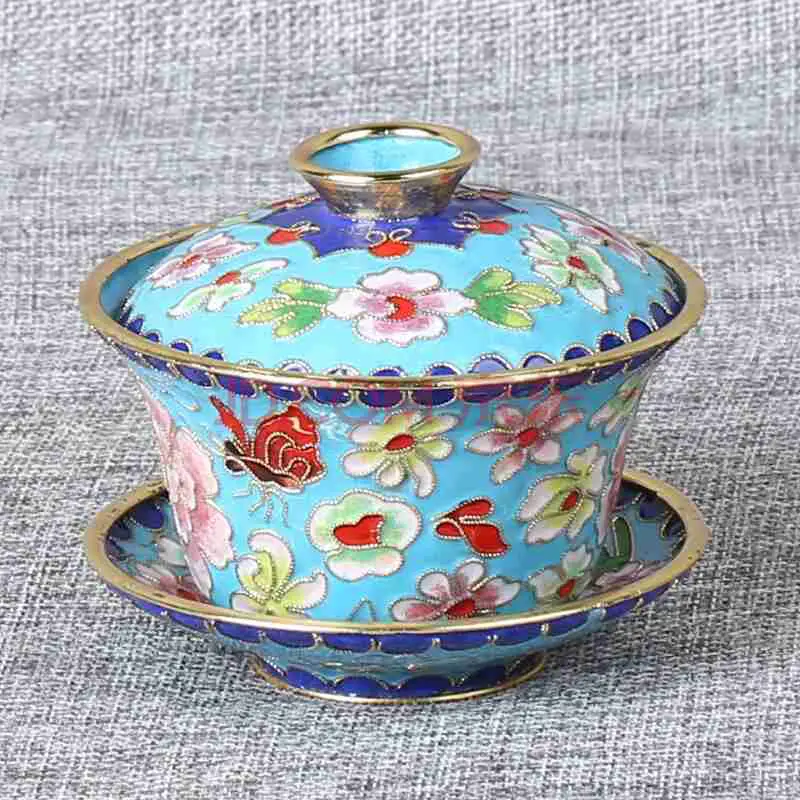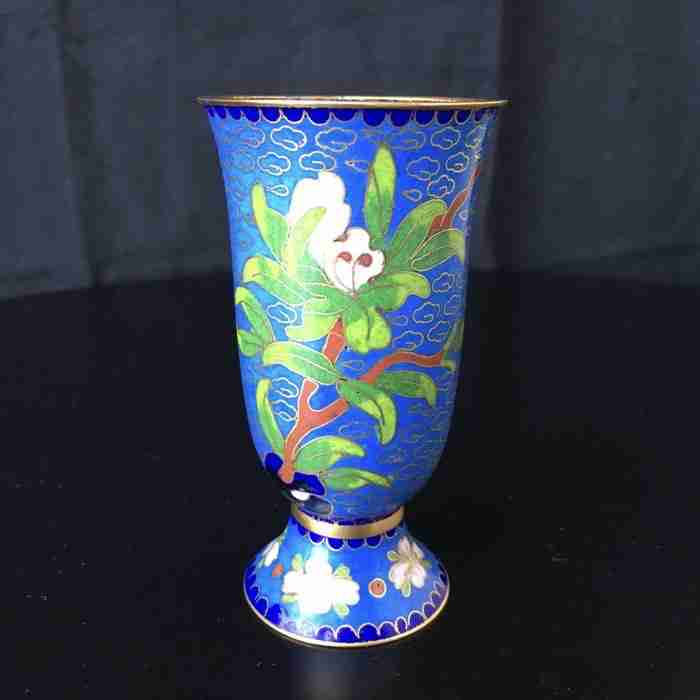Chinese cloisonné is an art technique that is often used to decorate various metal objects and ceramics. Most literary sources claim that the cloisonné art technique emanated from the West. Thereafter, the Chinese craftsmen learned how to create beautiful porcelains and bronzes in the Ming and Qing eras, and these pieces are valued up to date.
Why was cloisonné important?

Various cloisonné objects were primarily created and designed to furnish temples and palaces, because their exuberant nature was considered appropriate to these types of buildings. Unfortunately, cloisonné pieces weren’t well suited for a more restrained atmosphere, such as a school, or a scholar’s home. They were also ideal for lady’s chambers and eventually, they were greatly valued at court.
What is cloisonné made of?
As mentioned earlier, cloisonné is an enameling technique that involves forming patters by soldering wired to the surface of the item being decorated. The items are often made from copper, forming cloisons or cells, each of which hold a single color of enamel paste, which is then fired in a kiln then polished. Initially, during the 12th, 13th, and 14th century, bronze or bass were used to make the pieces. In the 19th century, however, the Chinese artisans preferred to use copper.
History of Chinese Cloisonné | who invented and when was it invented

Generally, cloisonné is believed to have originated in the Middle East, and the art technique slowly spread through the Byzantine Empire and then into East and South Asia, and became more popular in China during the Ming and Qing Era.
The craftsmen in the Ming Empire (from 1368 to 1644) made enamelware by firing different powdered minerals into long-lasting enamel. The earliest example of cloisonné was produced in 1430; however, Chinese cloisonné reached a higher level of beauty and craftsmanship during the reign of Emperor Jingtai (from 1449 to about 1457). Most cloisonné experts claim that the best ever made cloisonné pieces in the world trace their origin to the Ming Era, in the Jingtain period and afterwards. It was during this time that the craftsmen used light, translucent, and strong white porcelain as the base material. The outcomes were beautiful blue and white porcelain pieces with amazing cloisonné artwork.
Other fine cloisonné pieces were created during the Qing Empire (from 1644 to 1911), but the quality was less than the ones produced during the Ming Era. Gold decorative objects that featured fine cloisonné artwork were greatly valued by the Qing court.
Up to date, cloisonné decorated objects are still being made in China. Modern craftsmen, however, use chemical technology to make the pieces even more colorful, so it is very rare to come across pieces with the typical blue found during the Ming era.
Types of Chinese Cloisonné
Chinese cloisonné has become one of the most popular art forms loved by many interior designers, and other individuals alike. There is a massive market for a antique cloisonné pieces and the high-quality modern ones as well. When deciding what type of Chinese cloisonné to purchase, you can consider the following;
- Cloisonné with wires
One of the most common cloisonné types in the Chinese market is the cloisonné with wires. Metal wires are fixed to the body of a piece with great emphasis on the design. The areas between the wires are then filled with different colors of enamel.
- Wireless Cloisonné
In this case, the enamel is directly applied to the body of the piece, or the wires are applied when the enamel is being painted but then removed before the piece is passed through a kiln.
- Opaque Enameled Cloisonné
These have mattified elements, unlike the rest which are often brighter. These were greatly valued and produced in bulk between 1868 and 1912. There are so many antique pieces from this category available in the market.
- Translucent/ Semi-Translucent Enameled Cloisonné
This type of cloisonné has a small part of its body cut away then the part is filled with translucent or semi-translucent enamel. Doing this provides amazing variations between the opaque enamel that the other parts of the piece will be covered in. The effect is often compared to that of a stained glass.
How to identify antique cloisonné

If you want to identify antique cloisonné, you need to look at important factors such as their color and metal weight among others.
When you look at a modern cloisonné piece you may realize that it has a slightly pale or an uneven surface color or may have bumpy, detached, or raised cloisons. If you compare that to an antique piece made in the 18th century, you will realize that it has a smoother texture and more vivid colors.
Aside from that, modern cloisonné pieces are made from inferior alloy or metal bases and you can easily identify some that are decorated with resin. So the best way to tell whether you are dealing with an antique cloisonné piece is to feel the weight. Pieces that appear to be made from less sturdy materials or those that are too light may not be worth it. However, those that are heavy and are made from sturdy materials, are definitely antique pieces that were collected from the ancient times.
Also, it is important to look at the craftsmanship used to make the pieces. Generally, poor craftsmanship is often associated with modern and mass-produced cloisonné pieces. One thing for sure is that you can easily notice that the craftsmanship on older pieces is so much better. This however, does not rule out the fact the high quality modern cloisonné pieces are in production. Even so, antique pieces have a better design and end up being more valuable.
What is cloisonné worth?

Cloisonné prices tend to vary greatly, depending on the pattern on the piece, its age, and demand in the market. Generally, the older a piece, the more valuable and expensive it can be.
Cheaply produced pieces of Cloisonné were produced in the 19th century, however, they are worth a lot more than the ones produced in the 20th century. Also, if you land a piece from the 15th century, it is definitely going to be a lot more expensive than the ones produced in the 19th or 20th century.
Remember we also mentioned that the pattern on a cloisonné piece matters. You may come across some pieces with elderly simple floral box or you may find a Chinese vase with dragons or other symbolic patterns. The ones with simpler patterns cost a lot less while the ones with complex patterns are much more expensive.